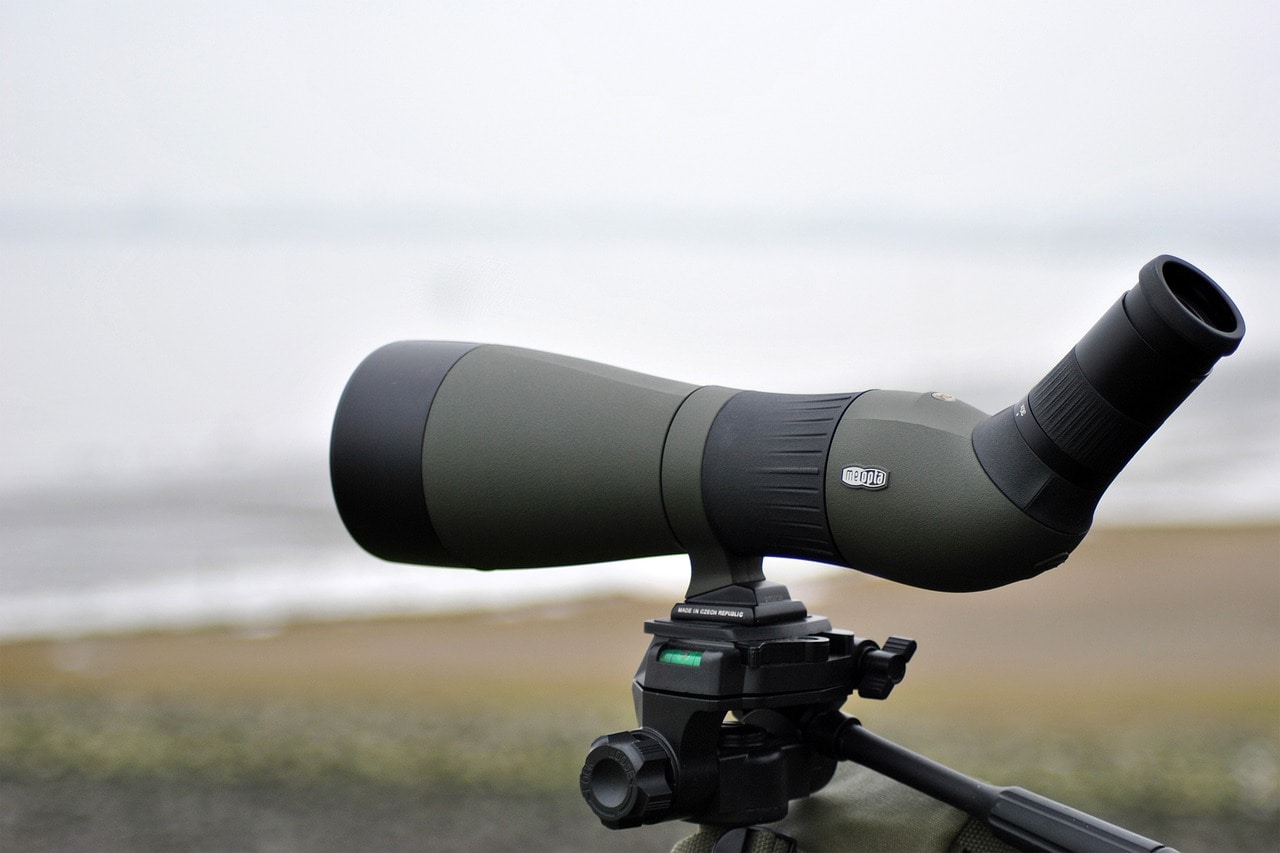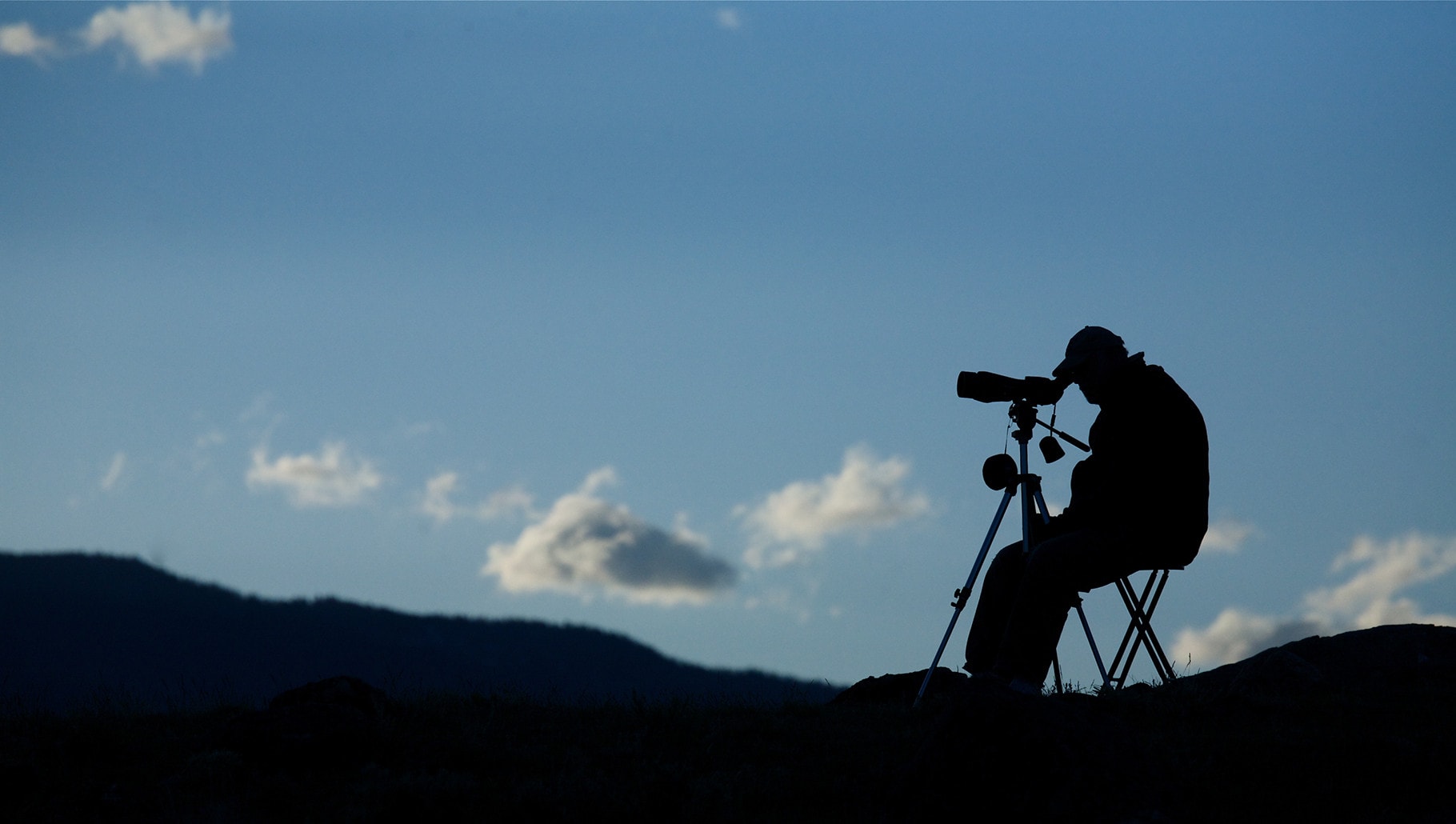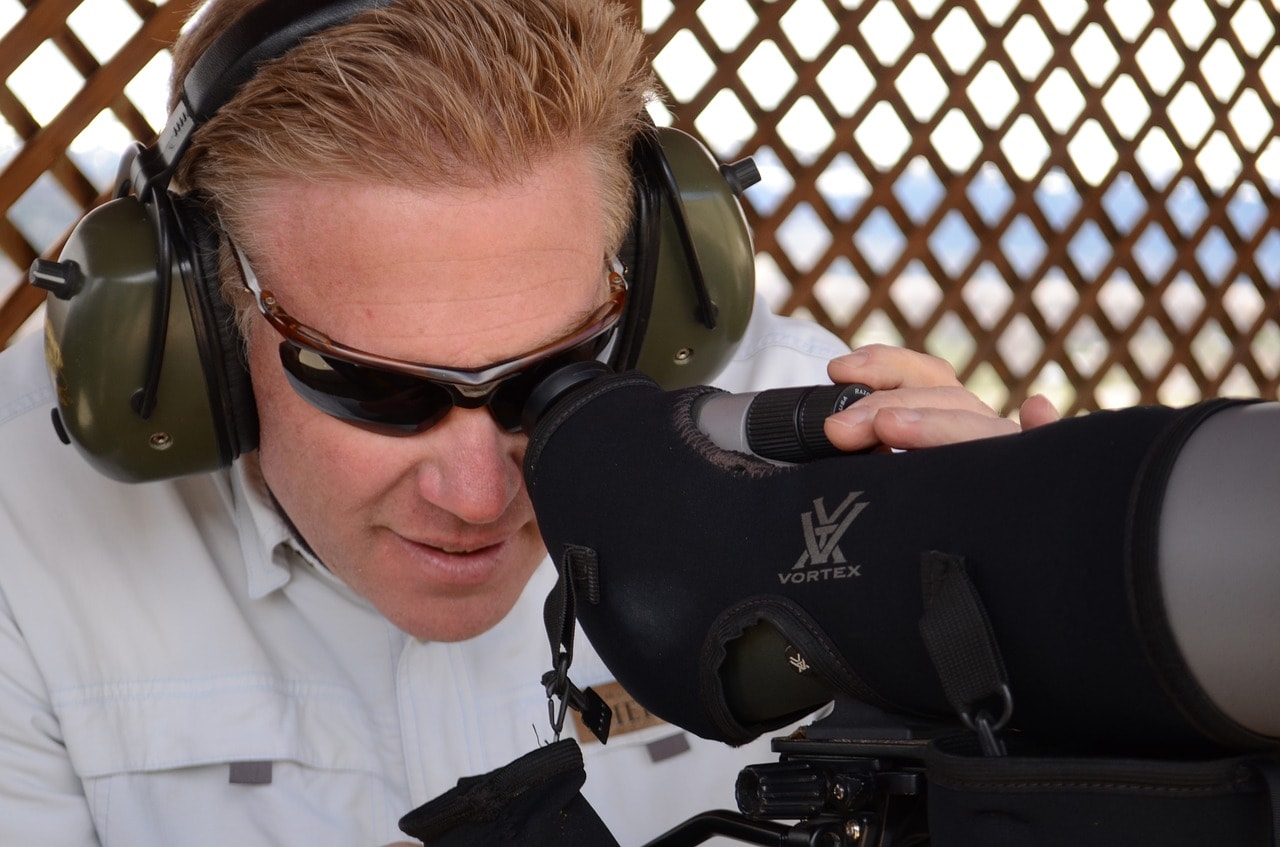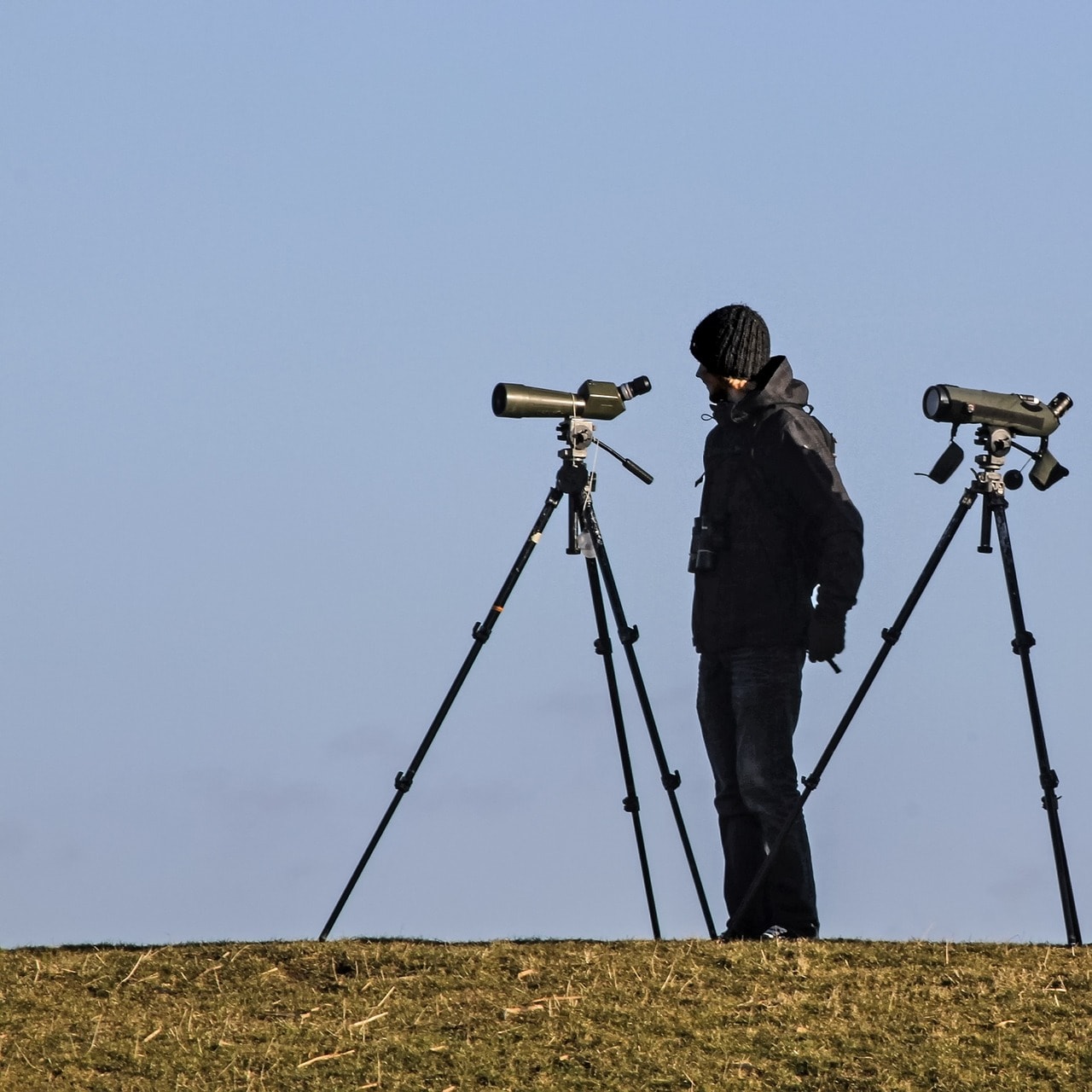How to Use a Spotting Scope for Birding (4 Helpful Tips)
Last Updated on

That hobby of bird watching finally turned into something more. You’re ready to upgrade from your binoculars to a spotting scope. With an average range of 15x to 60x magnification, there are plenty of options to pick from.
Once you have one, though, how do you even use it? Don’t worry, we have a step-by-step guide to help you get your scope sorted.

Understanding Scope Anatomy
Before setting up your spotting scope, know the basic anatomy of one. Just like binoculars, there are different parts that make the view as clear as possible. Thankfully, scope anatomy is fairly universal, with only slight variations from company to company.
There are 8 key parts to your scope, and they are:
- Ocular Lens: Look through this to view objects
- Eye Cup: Extend/Retract for use with or without glasses
- Zoom Adjustment: Rotate clockwise for greater magnification
- Focus Ring: Rotate to bring objects into focus
- Sun Shade: Protects the objective lens from the sun
- Objective Lens: Lens at the end used to point at an object to view
- Ocular & Objective Lens Caps: Use these to protect the lens when not in use
- Tripod: Foldable when not in use

These parts are the same no matter if you are using an angled spotting scope or a straight one. The major difference is the angled one is used mostly on tripods rather than being held.
How to Use Your Spotting Scope for Birding
Using your spotting scope is easy. With a spotting scope, there are two different options. There is an angled scope that looks like a lazy letter “L” or a straight scope. The difference comes down to comfort for you.
Setting Up Your Scope
When you finally get one, the first step is going to be bringing it into focus for you. Head out to the area that you want to search and watch for birds. Keep your distance from where the animals are located to get the best view with your scope.
If you are in a vehicle, a straight scope is going to be the best. This allows you to rest your scope on the window for a way to steady yourself. If you are out in the open, then a tripod is going to best suit your needs with an angled scope. A tripod makes it easier to adjust between people with different heights without worry.
Adjusting the Focus
After you found your spot and set up your scope, it is time to adjust it. You are going to use 3 different adjustments to best suit your needs.
- Eye Cup Adjustment: You are going to use the eye cup to adjust it to best suit your eye. If you are wearing glasses, you will have to either extend or retract it. To do so, you either twist clockwise or counterclockwise.
- Focus Ring: Adjusting the focus will make the picture clearer. To do so, twist the ring either to the left or the right.
- Zoom Adjustment: This is where you adjust the zoom for the image you are looking at. To zoom in, twist clockwise on the adjustment while the opposite is true for zooming out.
Adjust both the focus ring and the zoom adjustment as you play with each setting. What you are going after is a crystal-clear picture that is easy to see. If you are straining your eyes to see the picture, then you need to adjust either the focus or the zoom.

Once you have the right image, you will only adjust if your scope drops, someone else uses it, or you haven’t used it in a while.
Avoiding Glare
The sun is an ongoing enemy with using any form of magnifying device. With spotting scopes, though, there is the sun shade. Twisting it to the right or left is going to move the shade over the lens or retract it to let more light in.

4 Tips and Tricks
Using a spotting scope is a straightforward task. It comes down to your personal preferences and how well you understand the adjustments. There are some tips and tricks to help make your life easier though.
1. Use a Tripod
One of the biggest tips is to use a tripod when sighting scope or using your scope. Any shake or movement will blur your vision. If you are staying in your car, consider a window mount or just using your window as a place to rest your scope. Depending on your tripod, you may have an axis rotation lever, which is just a bar that sticks out the side of the tripod that allows you to move your scope on the X and Y-axis.
2. Rest Your Eyes
Your eyes are going to go through plenty of strain while using your sighting scope. Take frequent breaks to rest your eyes. The human eye is not meant to look at something magnified for a long period of time. Think of it like using glasses if you don’t need them. Eyestrain can easily be avoided by taking frequent breaks for longer than 30 seconds.

3. Pay Attention to the Atmosphere
On humid days, heatwaves, or days with a glare that you just can’t beat, the vision of your scope can drop. Instead of getting 60x, you are likely to only get 30x. To get the best out of the sighting scope, pay attention to the weather and what it is doing. The gas inside can still expand and contract, even if will not leak, which will affect the way images come through the lenses.
4. Digiscoping
This is the act of taking pictures through your scope. It allows you to take those stunning up-close shots. By adding an extra mount to the end of the sighting scope, you can attach a camera. If you are one that loves to capture events, then this could be a perfect way to do so. It captures whatever you see through the scope in detail.
Summary
That is it! You know how to use your sighting scope now and even know a few tips and tricks on how to get the best out of your scope. Happy bird watching!
Featured Image Credit: leenheer, Pixabay
About the Author Robert Sparks
Robert’s obsession with all things optical started early in life, when his optician father would bring home prototypes for Robert to play with. Nowadays, Robert is dedicated to helping others find the right optics for their needs. His hobbies include astronomy, astrophysics, and model building. Originally from Newark, NJ, he resides in Santa Fe, New Mexico, where the nighttime skies are filled with glittering stars.
Related Articles:
How to Clean a Refractor Telescope: Step-by-Step Guide
How to Clean a Telescope Eyepiece: Step-by-Step Guide
How to Clean a Rifle Scope: 8 Expert Tips
Can You Use Binoculars to Look At Stars? How to Choose the Right Pair
Monocular vs Telescope: Differences Explained (With Pictures)
What Is a Monocular Used For? 8 Common Functions
How to Clean a Telescope Mirror: 8 Expert Tips
Brightfield vs Phase Contrast Microscopy: The Differences Explained
